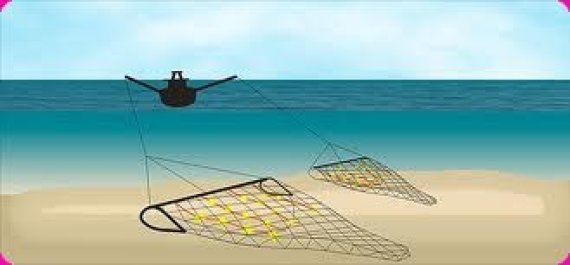The net profit from a pulse trawler is therefore 50 to 60 percent higher than that gained using a traditional bottom trawler. These figures are given by Imares researcher Bob van Marlen in a comparative study of the two methods in flatfish fishing.
Bottom trawling makes use of trawls which chase the flatfish out of the seabed. This is done by stirring up the seabed with heavy chains to get the fish into the nets. Pulse trawling uses electric impulses to drive the fish out of their hiding places. This does not disturb the seabed as much as bottom trawling does. Nevertheless, pulse trawling is controversial. Specifically, the long-term effect of the electric pulses on other sea life is not yet fully understood.
Less fuel
Imares has been researching pulse trawling for decades. In the trial which Van Marlen writes about in the latest number of the Fisheries Research journal, bottom trawls and pulse trawls went into the water side by side. Similarly equipment and nets were used, so that any differences in catch can be largely put down to the way the fish were provoked. Van Marlen compared bottom trawling with two alternative methods of pulse trawling.
The results are striking. Pulse trawls caught considerably fewer fish: about one third of the amount the bottom trawls brought to the surface. But their catch included much less bycatch. The combined effect of these differences was that about one third less plaice and sole were brought ashore. This lower catch is compensated for by much lower fuel bills. Fishing with a pulse trawl takes less than half as much fuel. All in all, the net profits are about 50 percent higher.
Discussion
The much lower bycatch (43 percent fewer undersized fish, 20 percent fewer lobsters and crabs) is good for the environment. On the other hand, a small proportion (c. 10 percent) of the cod caught gets damaged. According to Marlen, the electric pulses cause the muscles in this species to contract so much that their spines break. This effect is mainly seen in the larger cod. The results contribute to an ongoing discussion on the use of the pulse trawl. At present the EU has issued a temporary exemption allowing for limited use of the pulse trawl. Five percent of the Dutch fishing fleet is allowed to use a pulse trawl.

